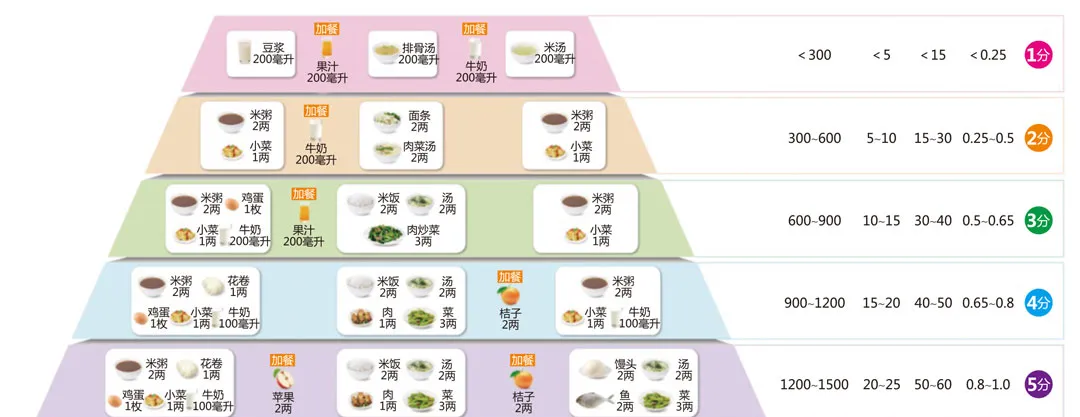Author: Zhang Jianping, Department of Pharmacy, Sixth People's Hospital Affiliated to Shanghai Jiao Tong University
Patients with tumors often have poor appetite, reduced diet, and often accompanied by chronic inflammatory response and metabolic damage, resulting in a significantly higher incidence of malnutrition than other chronic diseases. It also often leads to poorer clinical outcomes, including decreased treatment compliance, increased adverse reactions, decreased quality of life, and shortened survival.
Regarding the nutrition of tumor patients, the pharmacist has something to say
↓↓↓
Video loading...
The study found that when physicians asked patients about their dietary reviews during rounds, some patients who thought they were eating well still did not actually achieve good nutritional levels after professional evaluation by dietitians.
This group of patients with the problem of "hidden under-intake", that is, neither the patient nor the clinician is aware of the malnutrition of the patient.
This shows the importance of dietary surveys. However, routine dietary surveys (including 24-hour dietary review and 3-day dietary recording) are more difficult to be included in routine clinical practice by clinicians.
Here I bring you a convenient and fast dietary self-assessment tool: that is, the "Concise Diet Self-assessment Tool for Cancer Patients" launched by Professor Cong Minghua of the Cancer Hospital of the Chinese Academy of Medical Sciences.
This tool can help you quickly understand the range of dietary intake of tumor patients, and can better reflect the dietary intake and nutritional status of tumor patients in the whole process of treatment.
Through the study, it was found that the dietary patterns of tumor patients are actually regular, basically the following 5 patterns:
1, a day can only drink some pure liquid liquid liquid food, such as drinking chicken soup, rib soup, juice, soy milk, milk, etc., the daily energy intake is often not more than 300kcal;
2, drink three bowls of porridge a day, rotten noodles and other semi-liquid food, eat a little small dish, occasionally be able to eat an egg, drink some milk, basically do not eat meat, energy is often between 300 ~ 600kcal;
3, a day can eat a meal of a more normal diet, often in breakfast or Lunch, the other two meals are still based on thin porridge semi-liquid food, sometimes can eat 1 two meat, 1 egg, energy is often 600 ~ 900kcal;
4, a day can eat two meals of a more normal diet, there will be a meal and a half of liquid food or liquid food, meat in 1 ~ 2 two, less fat, energy is often in 900 ~ 1200kcal;
5, three meals a day is basically normal, you can eat 5 ~ 6 two staple foods, 3 two meat and corresponding fat, 1 egg, milk and meal fruit, energy in 1200 ~ 1500kcal.
According to the above characteristics, the common dietary patterns of tumor patients are quantified and scored on a score of 1-5 points.
Due to the vast territory of China and the different characteristics of staple food preferences in various regions, the self-evaluation table has designed 3 versions: the northern version (the staple food is rice and noodles are included), the northwest version (the staple food is pasta), and the Jiangnan version (the staple food is rice). For details, see Figure 1-Figure 3 below, and its main features are shown in Figure 4:

Figure 1 Concise Diet Self-Assessment Form (North)
Figure 2 Concise Diet Self-Assessment Form (Northwest)
Figure 3 Concise Meal Self-Assessment Form (Gangnam)
Figure 4 Key features of the Concise Diet self-assessment form
<h1 class="pgc-h-arrow-right" data-track="33" > summary</h1>
Through the self-assessment form, the amount of diet of cancer patients can be concise, dynamic, and self-evaluated, and the most important bridge between screening and evaluation and nutritional intervention can be connected.
Review expert: Guo Cheng, Department of Pharmacy, Sixth People's Hospital Affiliated to Shanghai Jiao Tong University
The above is the original work of the volunteers of the "Drug Safety Cooperation Alliance", if you reprint, please indicate the author and source!
【Medicine Shield Public Welfare】PSM Pharmaceutical Shield Public Welfare (public number: PSMChina), a public welfare organization jointly initiated and established by the China Over-the-Counter Drug Association, the Chinese Pharmaceutical Association, etc., gathers resources, gathers strength, and promotes the safety of public medication.